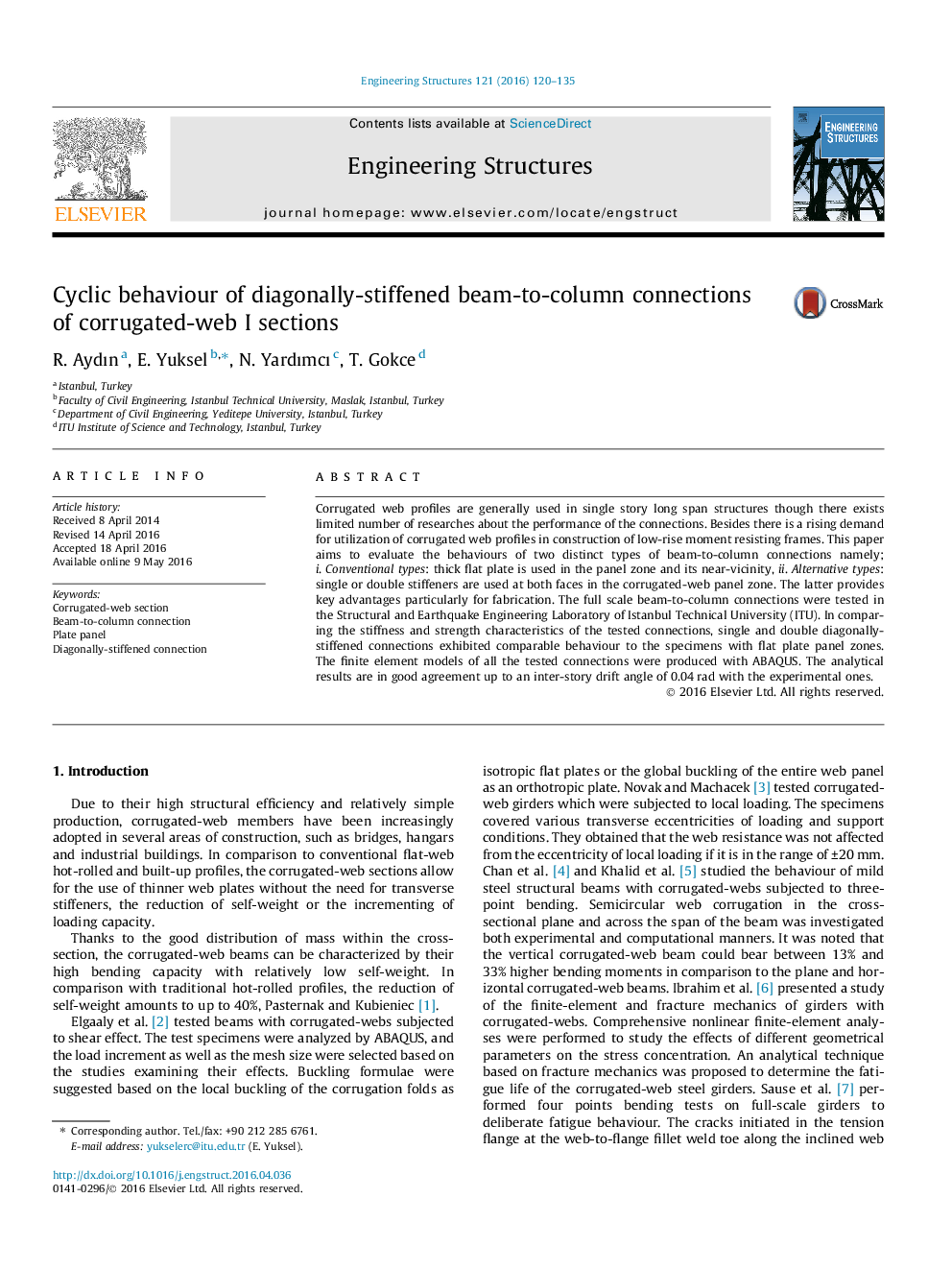| Article ID | Journal | Published Year | Pages | File Type |
|---|---|---|---|---|
| 265657 | Engineering Structures | 2016 | 16 Pages |
•Beam-to-column connections of sinusoidally corrugated-web I sections is studied.•Behaviour of the conventional and alternative types of connections are compared.•The robust FEM models are generated for the beam-to-column connections.•A coarse model is suggested to predict the force vs. displacement envelope.
Corrugated web profiles are generally used in single story long span structures though there exists limited number of researches about the performance of the connections. Besides there is a rising demand for utilization of corrugated web profiles in construction of low-rise moment resisting frames. This paper aims to evaluate the behaviours of two distinct types of beam-to-column connections namely; i. Conventional types: thick flat plate is used in the panel zone and its near-vicinity, ii. Alternative types: single or double stiffeners are used at both faces in the corrugated-web panel zone. The latter provides key advantages particularly for fabrication. The full scale beam-to-column connections were tested in the Structural and Earthquake Engineering Laboratory of Istanbul Technical University (ITU). In comparing the stiffness and strength characteristics of the tested connections, single and double diagonally-stiffened connections exhibited comparable behaviour to the specimens with flat plate panel zones. The finite element models of all the tested connections were produced with ABAQUS. The analytical results are in good agreement up to an inter-story drift angle of 0.04 rad with the experimental ones.
